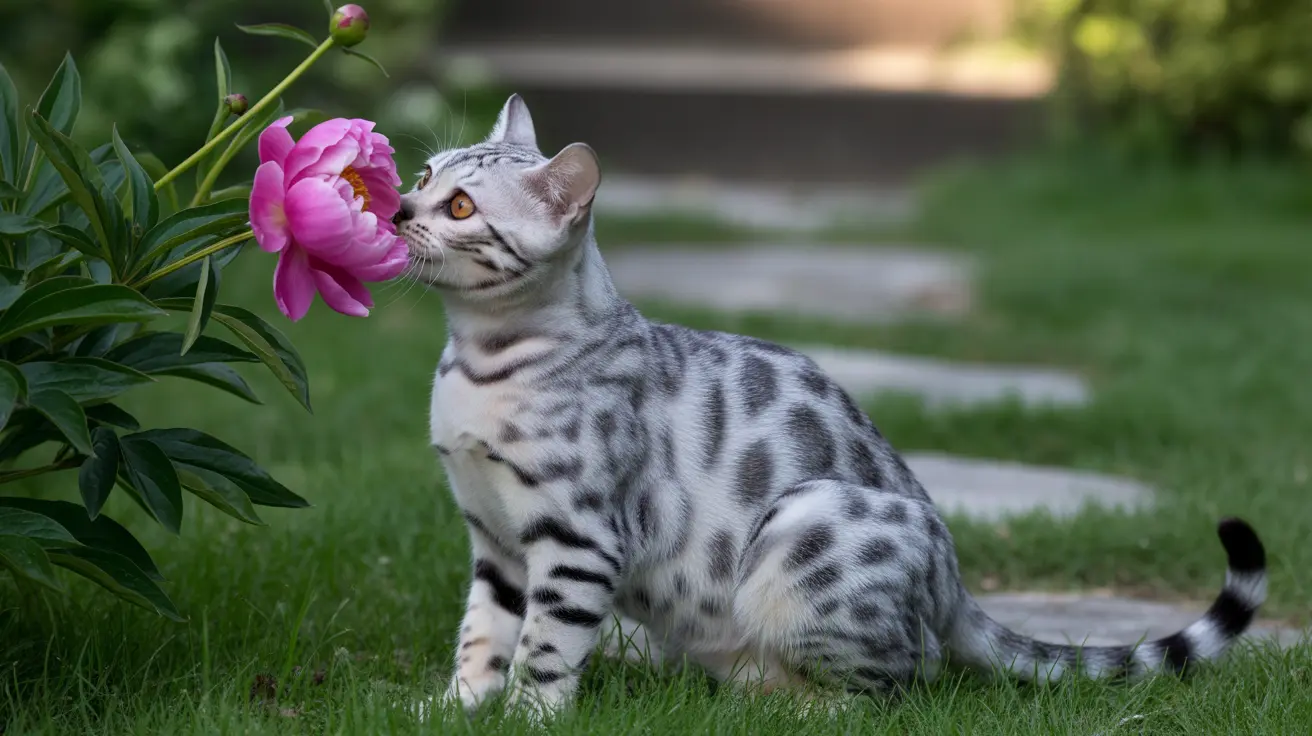Understanding Peony Toxicity in Cats
Peonies contain paeonol, a toxic compound that can cause adverse reactions in cats when ingested. While all parts of the peony plant are toxic, the bark and stems contain the highest concentrations of this harmful substance. Even the delicate flower petals can trigger symptoms if your cat decides to take a curious nibble.
Signs of Peony Poisoning in Cats
If your cat has consumed any part of a peony plant, watch for these common symptoms:
- Vomiting and diarrhea
- Excessive drooling
- Loss of appetite
- Lethargy and depression
- Incoordination
- Dilated pupils
- Increased heart rate
While most cases of peony poisoning are mild to moderate, the severity of symptoms can increase with the amount ingested. Immediate veterinary attention is recommended if you notice any of these signs.
Emergency Response and Treatment
If you suspect your cat has eaten any part of a peony plant, take these immediate steps:
- Remove any remaining plant material from your cat's reach
- Contact your veterinarian or emergency animal hospital
- Call the ASPCA Animal Poison Control Center (888-426-4435)
- Monitor your cat's symptoms and follow professional medical advice
Prevention and Safe Alternatives
The best way to protect your cat from peony poisoning is through prevention:
- Keep peonies out of reach or in rooms cats cannot access
- Consider pet-safe alternatives like roses, orchids, or sunflowers
- Properly dispose of cut flowers and plant debris
- Create designated cat-safe garden areas with non-toxic plants
Frequently Asked Questions
Are peonies poisonous to cats, and which parts of the plant are most toxic?
Yes, peonies are toxic to cats. While all parts of the plant contain harmful compounds, the bark and stems have the highest concentration of paeonol, the primary toxic compound.
What symptoms should I watch for if my cat eats peony flowers or leaves?
Watch for vomiting, diarrhea, excessive drooling, loss of appetite, lethargy, depression, incoordination, and dilated pupils. Contact your veterinarian if you notice any of these symptoms.
How should I respond if my cat ingests any part of a peony plant?
Immediately contact your veterinarian or the ASPCA Animal Poison Control Center. Don't attempt home remedies or induce vomiting without professional guidance.
Which toxic compound in peonies harms cats, and why is it dangerous?
Paeonol is the main toxic compound in peonies. Cats cannot effectively metabolize this substance, leading to various adverse reactions and potential health complications.
What safe flower alternatives can I use instead of peonies around my cat?
Safe alternatives include roses, orchids, sunflowers, snapdragons, and African violets. Always verify plant safety through the ASPCA's toxic plants database before bringing new flowers into your home.
While peonies can be dangerous to cats, understanding these risks and taking appropriate precautions can help keep your feline friend safe. When in doubt, always err on the side of caution and choose pet-safe alternatives for your home and garden.






